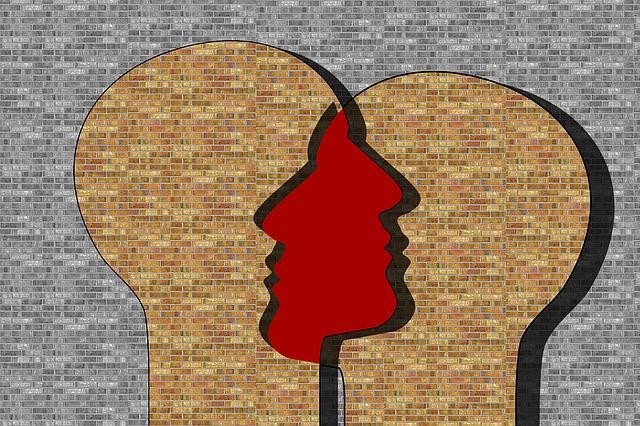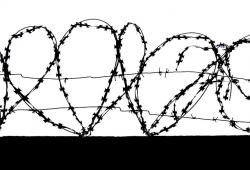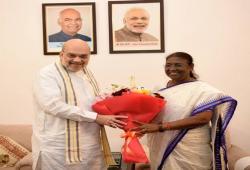
The emergence of the ‘Dalit’ identity has been the result of a long Indian history. ‘Dalit’ is a popular identity in India as it is in Nepal, Bangladesh, Pakistan and other parts of the world. Further, ‘Dalit’ is not limited to the Hindu religion alone. The identity transcends religion as there are Christian Dalits, Muslim Dalits, Sikh Dalits, Buddhist Dalits and Jain Dalits, too. This is therefore a word and an identity embedded in the Indian discourse of the oppressed.
Ramji was Dr. Ambedkar’s father but the addition has clear political motives and is designed to make the BJP appear aligned to Ambedkar and the struggle of his followers. It is clear that there is something amiss. We can see a political awakening of the 16.6 per cent of the Indian population who are ‘Dalits’, and the State and the political party in power lack the clear direction that is needed to handle this awakening.
The suggestion now by the government, without any public consultation, to prohibit the use of the word ‘Dalit’ in official communications is perplexing. Presumably, the State is troubled for reasons it can best explain. This comes about six months after the Yogi Adityanath government in Uttar Pradesh issued an order asking all departments to add “Ramji” as the middle name of Babasaheb Ambedkar. The move was criticised as politically motivated, among others, by Dr. Ambedkar’ grandson, Prakash Ambedkar. Ramji was Dr. Ambedkar’s father but the addition has clear political motives and is designed to make the BJP appear aligned to Ambedkar and the struggle of his followers. It is clear that there is something amiss. We can see a political awakening of the 16.6 per cent of the Indian population who are ‘Dalits’, and the State and the political party in power lack the clear direction that is needed to handle this awakening.
In America, the “Blacks” have popularly preferred the identity of “African-American”. In India, Dalits have had a much longer history of multiple identities before reaching the most popular identity of their choice, which is expressed in the word ‘Dalit’. It started from imposed identities of ‘Untouchable’, ‘Un-seeable’ and ‘Unapproachable’. The British in Madras province referred “subjects” as “Black Castes”. The first attempt ever to develop an identity based on their precarious living conditions was made by Mahatma Jyotiba Phule who coined the word ‘Shudra-ati-Shudra’. He and Savitri Phule had set up the first school especially for Dalit girls way back in the 1850s after taking up the fight against the practice of untouchability.
Gandhiji, who risked orthodox ire and their financial support to his Ashram at Ahmedabad, popularised a religious identity, ‘Harijan’, which was coined by the 14th Century Gujarati-Bhakti-Poet Narsinh Mehta. The latter was ostracised for continuing to sing bhajans at Dalit homes. Gandhi not only renamed his Ashram as ‘Harijan Ashram’, he went on to publish a periodical, ‘Harijan’ after a bitter confrontation with Dr. Ambedkar in the aftermath of the Poona Pact over the Separate Electorate.
Dr. Ambedkar popularised the term, “depressed classes” and he ridiculed Gandhi for perpetuating what he called the exclusion of ‘Dalits’ from others by calling them ‘Harijan’. Post-independence, the use of ‘Harijan’ was banned by various State Governments. Pre and post-independence, the term ‘Scheduled Castes’ was accepted as the official, constitutional term to identify ‘Dalits’. The constitution refers to a uniform identity of ‘Scheduled Castes’ (the list of Castes added to the Constitution as a ‘Schedule’) based on evidence of such castes having suffered disability arising out of the practice of ‘untouchability’. The British had undertaken extensive research and evidence-based studies following due procedures to work on a criterion for such a social-political identity, as it had become necessary in the wake of demands for political reservations and a separate electorate. As the facts suggest, each year more castes are added as compared to fewer deletions from the list of the ‘Scheduled Castes’ under various constitutional amendments. The Parliament of India admits the continuation of Untouchability practices with or without use of the term ‘Dalit’.
Dr. Ambedkar popularised the term, “depressed classes” and he ridiculed Gandhi for perpetuating what he called the exclusion of ‘Dalits’ from others by calling them ‘Harijan’. Post-independence, the use of ‘Harijan’ was banned by various State Governments. Pre and post-independence, the term ‘Scheduled Castes’ was accepted as the official, constitutional term to identify ‘Dalits’.
India is perhaps the only country in the world where there have been books such as ‘Manusmriti’ which even dictated what names various castes should give their children with a view to protect the varna-based Caste system. The community battered with humiliation, discrimination, oppression and subjugation over centuries were in search of an identity that could help them to carry with pride and not as ‘untouchable-impure’. Dalits defied ‘Manusmriti’ and named their children besides changing their surname. In Nepal, concerned with the trend of blurring caste identities with common surnames, the administration in some parts decided to ask people to add into brackets the caste status of citizens after the surname,
Conversion of Dalits into other faith such as Christianity, Islam and later to Buddhism had raised serious concern among organsiations like the Arya Samaj (and lately the Vishwa Hindu Parishad), leading to programmes of re-conversion. Interestingly, the ceremony requires ‘suddhi’ (making “pure”) of the converts as they were subjected to “impurity” associated with other faiths and to ensure that after ‘suddhi’, they return to their ‘Untouchable’ status and definitely have a certificate of a ‘Scheduled Caste’ without which they cannot protect their rights in terms of “reservations”. There is ample evidence Dr. Ambedkar had put before the Lothian commission of a conspiracy in various provisions to show a much lesser population of the ‘Depressed Class’ to lessen their political reservation.
The battle over the ‘Scheduled Caste and Scheduled Tribe (Prevention of Atrocities) Act’, with a section of the Marathas demanding that it be scrapped and the dispute over its operational procedures, shows that the political heat caused by the political organisation of Dalits is being felt.
The question now arises as to why in the midst of a host of challenges the government faces – the falling rupee, rising oil prices, tensions over NCR in Assam and Bengal, the general feeling of drift and rising voices form the Opposition – the government finds the time to push through a directive asking that the term ‘Dalit’ not be used. It was much easier to deal with Scheduled Castes, further divided with into sub-castes fighting with one another as groups get embroiled in questions on who was garnering more benefits. It’s difficult to deal with a population who under the continuous influence of Ambedkar calls for the “annihilation of caste” and has chosen to unite and organise especially politically under a banner of ‘Dalit’.
The fact is ‘Dalits’ have emerged as a political force. The movement has its place power and logic in the Indian political firmament. The battle over the ‘Scheduled Caste and Scheduled Tribe (Prevention of Atrocities) Act’, with a section of the Marathas demanding that it be scrapped and the dispute over its operational procedures, shows that the political heat caused by the political organisation of Dalits is being felt. The government’s demand not to use the term ‘Dalit’ must be seen in this light. It is uncalled for, and shows that mis-directed actions come from mis-directed politics and policies. And they will all misfire.
(The author is an activist and the founder of Navsarjan, a grassroots Dalit organsiation fighting for human rights since the 1970s)







